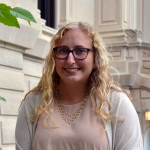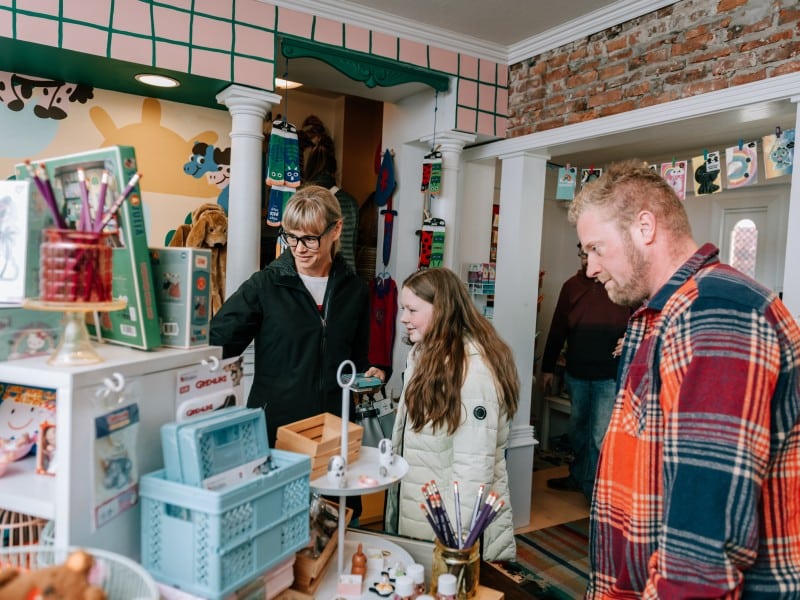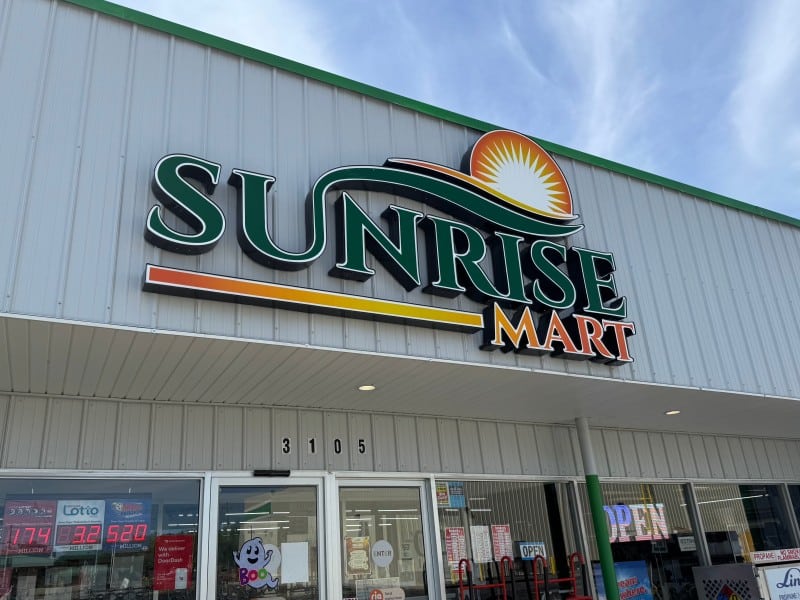FOCUS ON WARSAW: Step inside one of the last hand-cut glass facilities left in the US
Warsaw Cut Glass is keeping the city’s 100-plus-year legacy alive, showing locals and tourists alike what primitive hand-cut glass is all about.

Since 1912, the same building has stood at 505 S. Detroit St. in downtown Warsaw.
It was built with rejected paving bricks from the Warsaw street department and designed with many windows for natural light because it didn’t have electricity at the time.
When Randy Kirkendall was in high school in the 1970s, he had a strong affinity for the space.
“I always said, ‘If they ever try to tear that building down, I’ll be the one laying down in front of a bulldozer to save it,’” Kirkendall says.
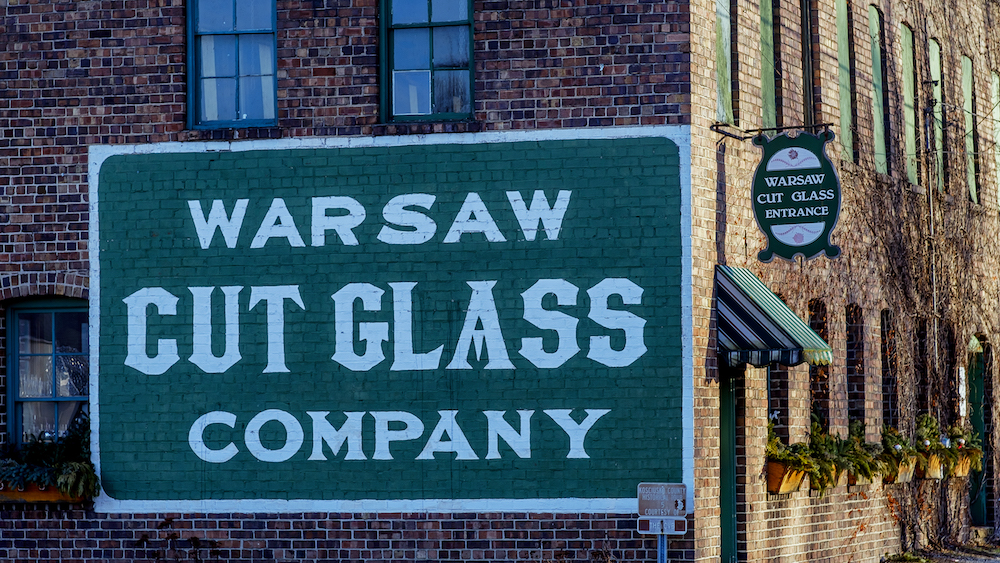
In a way, his life’s work has been doing just that.
Today, Kirkendall and his family are carrying on the building’s 100-plus year legacy as Warsaw Cut Glass—the oldest shop in Downtown Warsaw and one of the last hand-cut glass facilities left in the U.S.
Over the years, they’ve developed a consistent clientele base around this rare artisan craft, not just in northeast Indiana, but across the country, drawing in locals and tourists alike to see what primitive hand-cut glass is all about.
***
Leather belts wind around stone wheels, flapping overhead in the building. They’re suspended, pulling another wheel that looks like an old barbell weight closer to the ground. It spins in front of a stool. Water drips consistently from a wire onto the spinning wheel, stopping glass dust from permeating the air.

Randy sits behind the spinning wheel, holding a decanter marked with a sharpie for guidelines. He gently presses the glass against the wheel’s spinning edge, and it hisses as it cuts, as he slowly turns it in his hands to create a shape.
Warsaw Cut glass has about 50 standard designs they put on everything from drinkware to vases and other containers or serving ware. They use different shaped wheels to create different cuts, Randy says.
“It’s learning how to put them together in different combinations to get the different effects,” he explains in a video demonstration. “But the sky’s the limit as far as possibilities go.”

It’s this process of grinding and polishing to create custom, ornamental patterns that makes hand-cut glass one-of-a-kind.
The shop first opened its doors in 1912 as a production plant for Chicago’s fast-growing Johnson-Carlson Cut Glass Company. The business owners met with Warsaw Chamber of Commerce and chose a prime location in downtown for its economic prospects.
To this day, the demand for the shop’s various products continues to increase and change with customers’ needs, sending products all over the country, Randy explains.
“The UPS truck is here every day, so that’s a good thing,” he says, laughing.
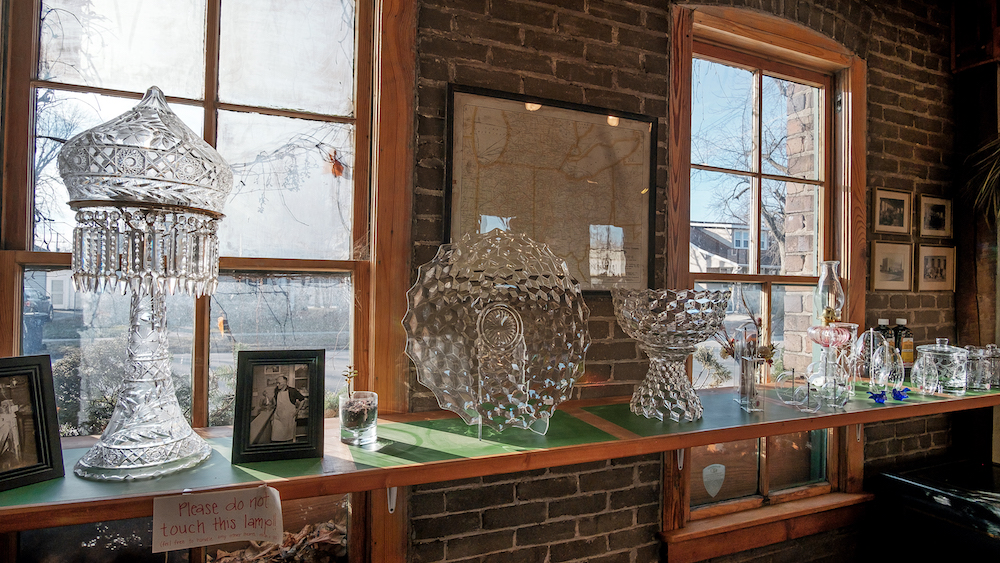
The showroom is filled with display tables of delicate vases, glasses, and ornaments—all on which Warsaw Cut Glass has made its mark.
A Warsaw native and creative soul, Randy learned the intimate craft of glass cutting from his predecessor, Jackson Dobbins, who began working at Warsaw Cut Glass in 1914 as an apprentice at age 14 and later purchased the company in 1957 after it barely survived the Great Depression.
Johnson-Carlson closed the plant for about one year in the early 1930s due to a lack of demand and a low supply of lead crystals, its website says. When it reopened under private ownership in 1933, Dobbins was one of two cutters left.
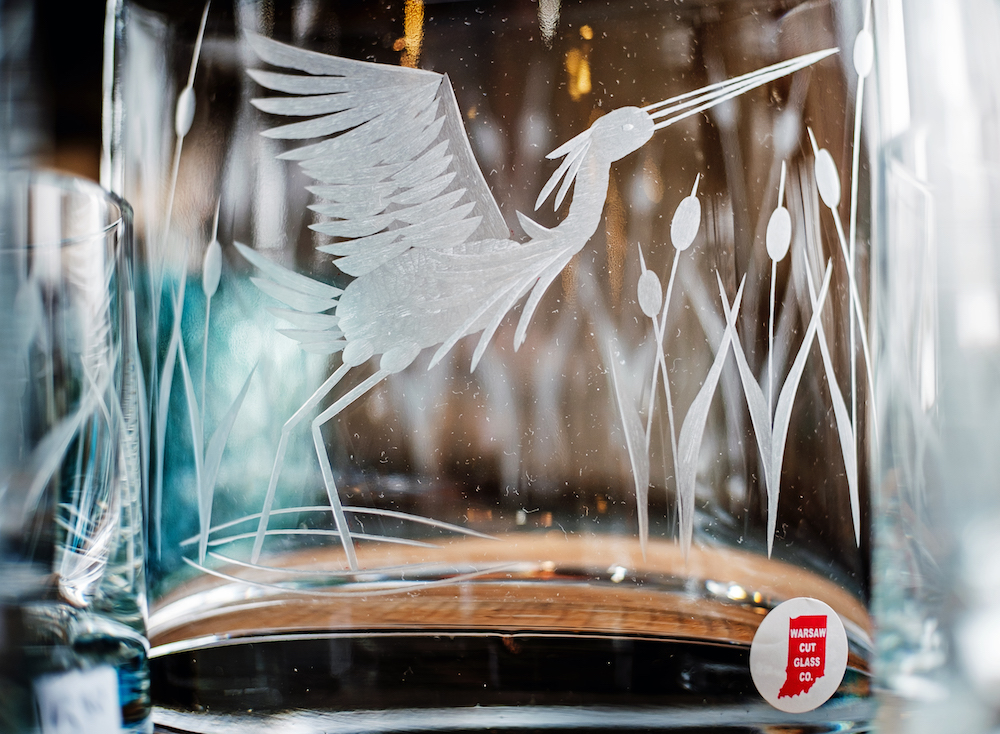
As Dobbins’ health began to decline in the 1980s, there were few worthy candidates to carry on the rich tradition of glass cutting until he found Randy and Linda—recent Indiana State University grads with degrees in other art forms, like silversmithing and furniture design.
“We were on the way to the University of Wisconsin to get our master’s degrees, and my father-in-law said there was an older gentleman trying to find somebody to take over his business at a really neat shop,” Randy explains.
“Obviously, we never got our master’s at the University of Wisconsin,” he adds.
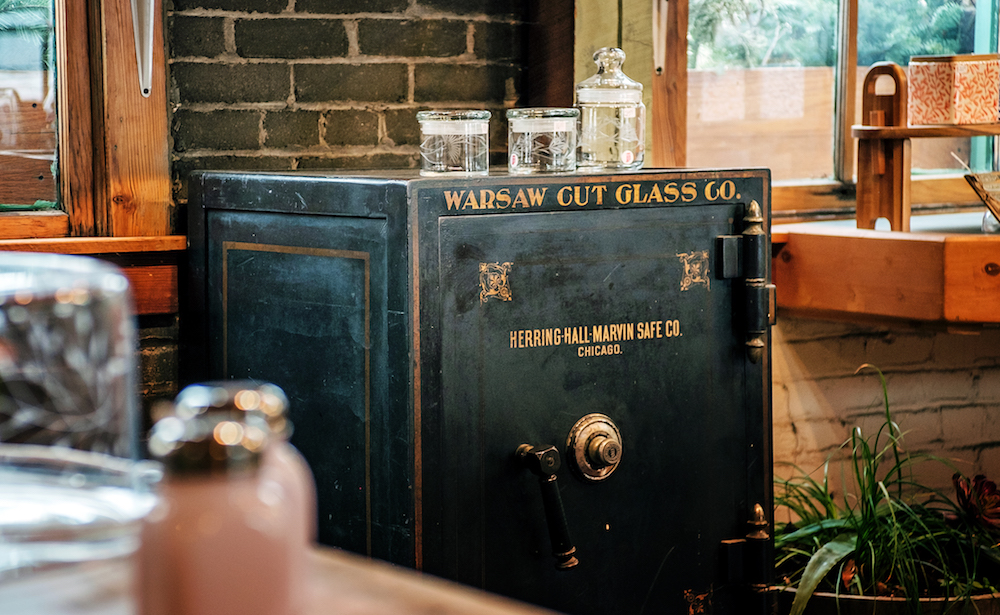
As they say, the rest is history.
***
While the development of new technologies and machinery began to take hold throughout the turn of the century, Randy and his wife Linda take pride in the fact that they still use the shop’s original shaft and leather belt.
But while the equipment has been carefully preserved, Randy says the company has had to make some changes to keep growing its success.

“When my instructor (Dobbins) was around, word of mouth was always the best advertising,” Randy says. “But then the area started to become more saturated, so we’ve had to start pursuing a webpage and online store, and that has helped to expand the clientele.”
While the company has had a loyal customer base for special events, like weddings, Randy and Linda’s daughter, Lauren Kirkendall, has helped to contribute new ideas to the company, too.
“Personalization has taken off,” Lauren says. “We have some more playful things, like wine classes with funny sayings. We try to make it less formal.”

She says that her dad has even transferred children’s sketches onto glass. It’s all about playing up the historic art form’s appeal while still providing cherished, lifelong mementos to customers.
Warsaw Cut Glass has even partnered with Lake City Animal Health and Wellness Center to create elegant glass memorials for pets of all kinds—something that Randy says breaks his heart, but helps eternalize memories for their owners.
The company even offers classes allowing visitors to try glass cutting themselves, surrounded by the whizzing belts and spinning wheels of the past.
***
For years, people took the beauty of glass cutting machinery for granted because it was so commonplace, Lauren says.
So over the years, during the shop’s slower winter seasons, Warsaw Cut Glass started opening up their workshop for classes to help the public rediscover this nearly-lost art.
“They get more appreciation for the work and product, and we have fun with it, too,” she explains.
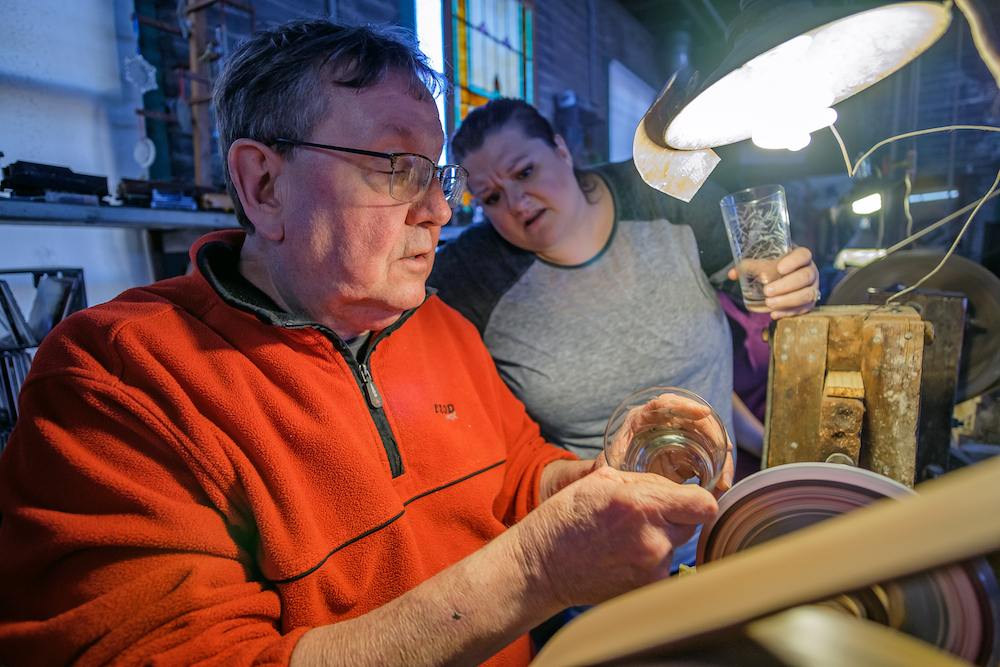
Today, Lauren and Randy teach intimate 2-hour classes with two people at a time on winter weekends.
Local resident, Kate Burns Nowak attended a recent class taught by Randy with a friend, and gushes about the experience of cutting glass for the first time.
“He made it look so easy, but it’s not,” she says. “(Randy’s) instruction was good, but it was such a relaxed atmosphere that I wasn’t putting undue pressure on myself.”
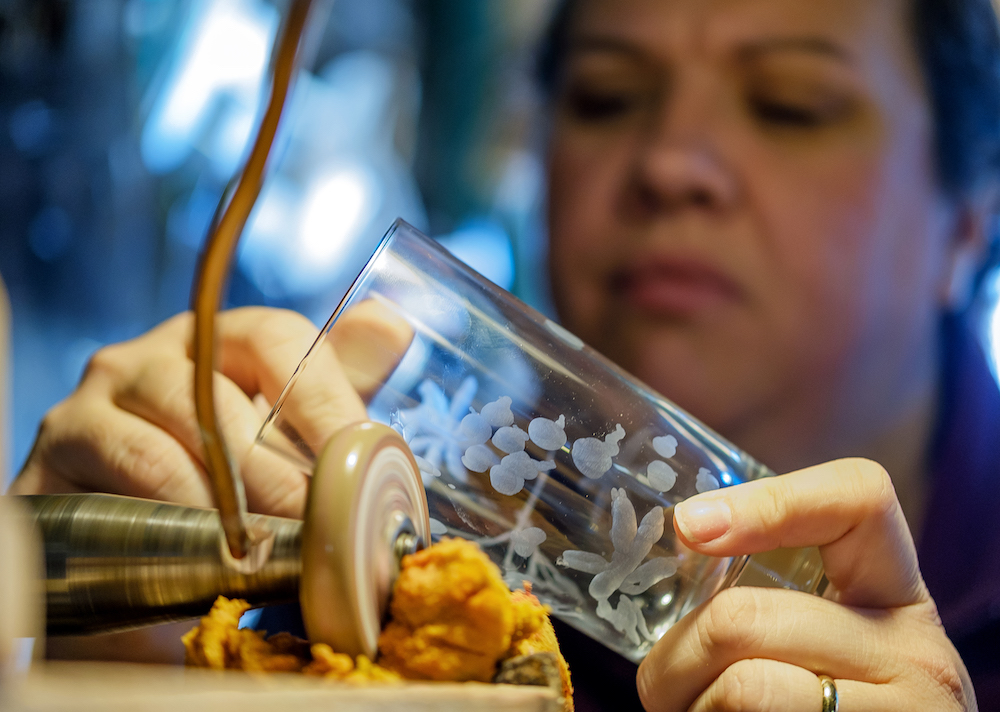
She says that while she’s always appreciated the cut glass shop in town (owning a few pieces and gifting it to friends for weddings or anniversaries), taking a glass cutting class gave her a new appreciation for the craft, her town, and its history.
For $35, participants get to take home 4 glass tumblers and a vase, personally etched themselves, which Nowak says is “completely worth it.”
The Kirkendalls recognize that creating relationships with the community only builds their impact, benefitting the culture of the Warsaw area and its economic prospects.
While cut glass may be a dying art, its rarity makes all the more valuable to regional tourism, notes Jill Boggs, Executive Director at Kosciusko County Visitors Bureau.
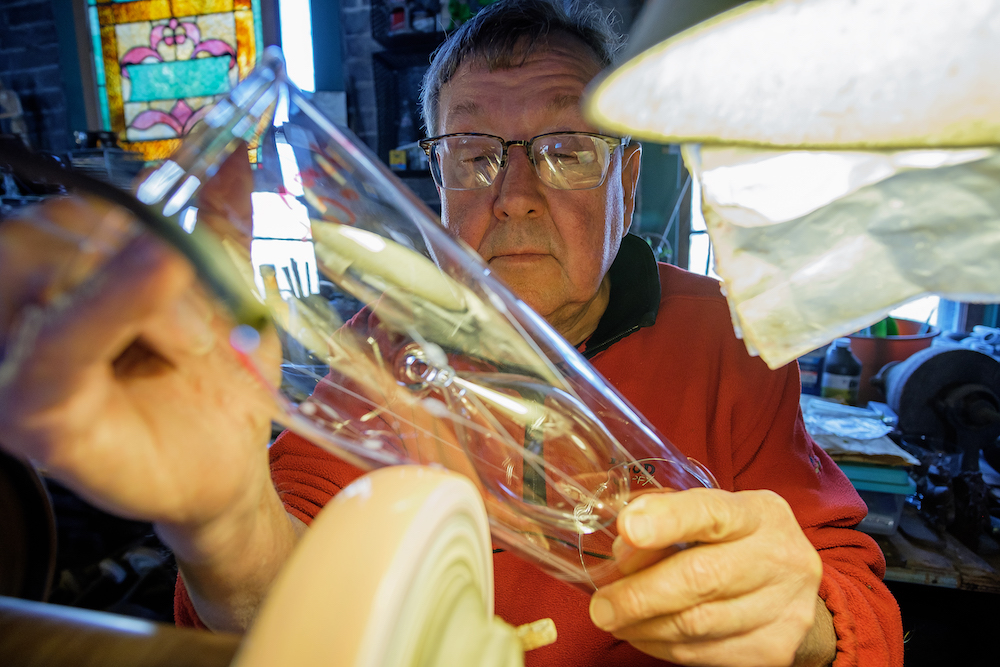
The shop is a member of the Indiana Glass Trail, which includes about 20 Indiana counties where artisans create works of glass art using various methods and skills that few still possess.
As such, it has received more than 600 inquiries from people all over Indiana and surrounding states asking for information on the artisan business.
“Art culture tourism is alive and growing in our country,” Boggs says. “Original experiences draw visitors.”
In other words, the demand for local, small businesses doing unique things is higher now than ever as the city expands.
“We need to consistently do the best we can to let (local businesses) know they are valued and that their presence makes a positive economic impact for us all,” Boggs says.
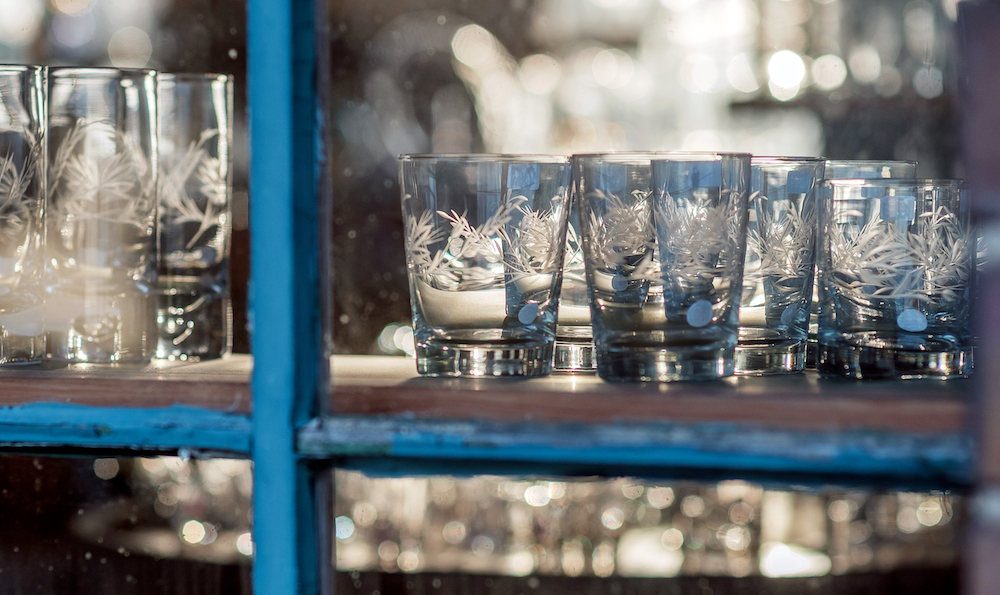
The Kirkendalls echo these sentiments, saying a shop is only as strong as the community that supports it. Looking to the future, Randy says the company’s vision is simple: To keep adapting and advancing their craft and keep the tradition of Warsaw Cut Glass alive.
“That’s our long-term goal,” says Randy, “That in another 100 years this place will still be producing hand-cut glass.”
Visit Warsaw Cut Glass
Warsaw Cut Glass is located at 505 S. Detroit St., Warsaw, Indiana 46580. It is open Tuesday-Friday 10 a.m. to 6 p.m. and Saturday 9 a.m. to 5 p.m.
To learn more, visit http://warsawcutglass.net.
For questions or to schedule a class, call Lauren at 574-267-6581 or email lauren@warsawcut-glass.com.
You can also follow Warsaw Cut Glass on Facebook.
Would you like to see more news about your city in Input Fort Wayne? For the next few weeks, we’re doing a special FOCUS ON WARSAW series, drawing attention to the people, places, and projects shaping what’s next for the Orthopedic Capital of the World. Contact our editor to learn more at editor@InputFortWayne.com.

